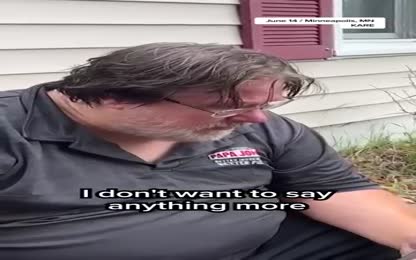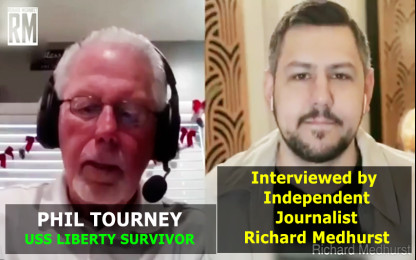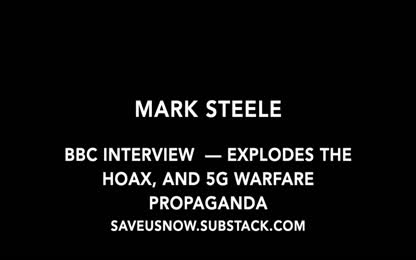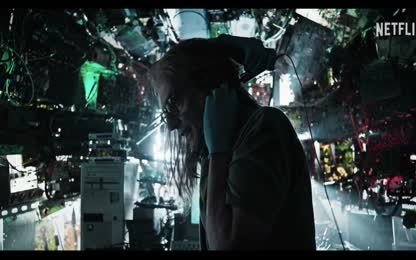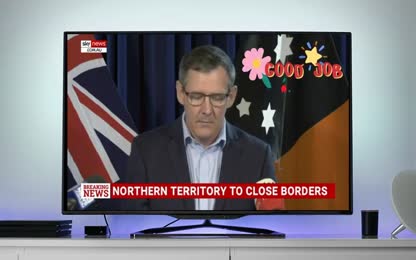Advertisement
First All-Woman Spacewalk & Degrasse Interview also mirror according to joe
First All-Woman Spacewalk & Degrasse Interview also mirror according to joe
On this very special edition of StarTalk, Neil deGrasse Tyson catches up (literally) with Expedition 61 astronauts and flight engineers Christina Koch and Jessica Meir who are currently aboard the International Space Station. You'll find out what kind of science experiments Christina and Jessica are currently overseeing during their mission aboard ISS.
https://www.youtube.com/watch?v=KcpPR-t6MBk&t=1062s
First ALL-Women Spacewalk OCT 18TH 2019
https://www.youtube.com/watch?v=8Xznk0_ozIc
- Category: Pursuit of Truth,AstroNot / Actornauts ,Uncategorized,Satellites / Space / Planets
- Duration: 39:13
- Date: 2019-11-30 06:30:27
- Tags: first all-woman spacewalk degrasse
10 Comments
Video Transcript:
I'm seeing Jessica Mirr, make another first step, her first float out of the hatch there. I'm here. I'm here. Hello, you nice pink. Congratulations, Christina and Jessica on this historic event. What you do is really something very special. So first the moon and then we go to Mars. It's just coming out here and doing our job today and we were the crew that was tasked with the assignment. At the same time, we recognize that it is a historic achievement and we do of course want to give credit to all of those that came before us. There's been a long line of female scientists, explorers, engineers and astronauts. We have followed in their footsteps to get us where we are today. And it just so happens that we have the right people doing the right job at the right time. And in fact, this is historic because those two right people are women. It's been 100 years that we've had the right to vote this year. So this year, while we celebrate that, we also check another box. We've been doing spacewalk and the next one, the big one, is for us to walk on the moon. This is a milestone. It symbolizes exploration by all that bear the dream and work hard to achieve that dream. We hope that in inspiration, the all future floor. For EV2, my half is dry. Looking at the gloves, I have a few eraser marks other than that looking nominal. Copy, dry, half and copy your glove report. Now, our in 45 minutes into today's spacewalk, Jessica Mirk, reporting that her gloves look good. And there's no water in her helmets. So that's all good signs. While we wait for her to move on to the next task, we'll take another couple of ass NASA questions. For EV2, my half is dry. For EV2, my half is dry. Jessica Mirk, reporting that her gloves look good. And there's no water in her helmets. Has it made any car vents? So I think it would be very consistent with every other spacewalkers experience that it is a joy to be underneath that in space. So she's probably thinking, this is way better than the pool. Neutral buoyancy laboratory? Yes. We should probably explain what the pool is. The neutral buoyancy laboratory. You practice it. Yes, we fondly call it the pool, but it's a gigantic training facility that holds the mock-up of the space station. And that's just how we practice spacewalking. And though we can become buoyant, neutrally buoyant in the pool, we can't take away gravity. And so... P4 hand rail. 5104 for SSR mess setup. P4 EV2, my half is dry. P4 EV2, my half is dry. Hello, YouTuberverse. Neil deGrasse Tyson here, your personal astrophysicist. I just got off of a video call with the International Space Station. A live conversation with the two astronauts there. I knew whether we had Jessica Mirk and Christina Cook. They've spacewalked together recently and got a little bit of that overview effect. And this is Houston. Are you ready for the event? Houston, this is Station. We're ready for the event. Start talk. This is Mission Control Houston. Please call Station for a voice check. Station, this is Neil deGrasse Tyson with Start Talk Radio. How do you hear me? Hello, Neil. We have you loud and clear. How do you hear us? Excellent. Excellent. Let's do this. It's great to have this time with you. I think they only gave us 20 minutes. Is that must be when you're in this part of the hemisphere? I think you of course are scientifically trained. And I'm just wondering what kind of science and engineering tasks or projects or experiments have you been conducting while you've been up there on the International Space Station? Well, we have really been involved in every type of science. So far, I have been up here for about two months. I have been involved in an experiment growing Missouna lettuce. That's actually located right here next to us. You can see the two different light wavelengths here. We have a red and a blue wavelength evaluating light quality and fertilizer. I've been involved in a variety of physiological and medical studies. We have done experiments looking at protein crystal growth, evaluating having potential for future pharmaceuticals, for various drugs, for various drugs for disease states. We have been involved in ultrasound studies looking at different physiological aspects like blood flow and how that changes in microgravity. So, type of science, you name it. All combustion experiments, for example, we have a combustion rack, even flames, of course, burn differently in microgravity. So, a little bit of a sampling of everything. And I think that's what keeps our jobs so interesting is that it's not just, you know, for example, my particular field of expertise, it's really all the aspects of science. Combustion experiments. That doesn't sound safe. I assume there are fire extinguishers all around station. That is true. There are fire extinguishers all around station, but we do hope to never have to use them on our combustion integrated rack, the scientific payload rack where we do combustion experiments. They're in a chain. For EV2, my half is dry. Looking at the gloves, I have a few eraser marks. Other than that, looking nominal. Copy dry half and copy your glove report. Thank you. Now, our in 45 minutes into today's spacewalk. Jessica, you're reporting that her gloves look good, and there's no water in her helmets. So, that's all good science. While we wait for her to move on to the next task, we'll take another couple of ass NASA questions. That is too hard to grow human organs in space. Now, that's of course not for food or consumption. That is to contribute to the deficit of organ for transplant operations on the ground. By any kinds of efforts on the ground, when you are trying to produce these tissues and make these bioartificial, of course not that is to grow human organs in space. Now, that's of course not for food or consumption. That is to contribute to the deficit of organ for transplant operations on the ground. And by any kinds of efforts on the ground, when you are trying to produce these tissues and make these bioartificial tissues, there's... Just time for just a couple more questions. I just want to have some fun questions. So, one of them is I've sometimes been criticized for commenting on the science of movies. And in the movie Gravity, Sandra Bullock's bangs always pointed down. And I'm looking at you here now doing its thing, doing its zero G thing. And so, I'm just curious. I don't know. I guess that wasn't a question. I just want to tell everyone, look at your hair in space in zero G. The hair does not know which way down is where... There you go. There you go. Yep. Yep, that's absolutely true. I think our special effects are a little bit better up here maybe than in the movie Gravity. But for me, I was really surprised that not only did my hair not float sideways, it actually just goes straight up, which makes sense in retrospect. But you don't really even expect that much. No, which way down is where... There you go. There you go. Yep. Yep, that's absolutely true. I think our special effects are... Yep, that's absolutely true. I think our special effects... Yep, that's absolutely true. I think our special effects are a little bit better up here maybe than in the movie Gravity. But for me, I was really surprised that not only did my hair not float... Well, excellent guys. Thanks for taking the time for Start Talk Radio. And we got you on video as well. And so, very much appreciated this. Thank you very much. Thank you, Neil. It was our pleasure. Station, this is Houston, ACR. That concludes our event as we count down to 20 continuous years of humans living and working on the International Space Station. That concludes our event as we count down to 20 continuous years of humans living and working on the International Space Station. That concludes our event as we count down to 20 continuous years of humans living and working on the International Space Station. That completes our special effects. And, we are carrying out a virtual concert asking for ideas to keep us no longer than we were born from this place, and moving from Rick's fingers at August 14 to 1th, to space with us for us to take us home. But we cannot afford the full space anymore. We cannot afford the full space or anything else. is What's what he does with his hands over here? Okay, just watch. There was a adjustment of some sort. We call it innocent by nature, but keep watching. What was that about? What is that? What's he doing? Oh hell, you could say anything. Yeah, let's give him the benefit of the doubt. But remember what's going on here. Remember that what they're doing here is they're showing us that they are not a space because there's no gravity, and so they're doing all kinds of different things in a space. You can see this lady's hair all the way in the back over there, right? There's no gravity, right? So the hair is floating up in the, you know, in a space, right? Because there's no gravity, all right? All right. Okay. So, let's keep watching. This is what they're doing. That's what they're showing us. Yeah. Oh, I want to do it. Oh, yeah, I can do that. Watch it. Oh, yeah, I can do that. Oh, yeah, I can do that. Oh, yeah, I can do that. Watch it. Oh, yeah, I can do that. Oh, yeah, I can do that. Do you see his hand down there? YouTube. Okay. Now, there's nothing you can see down there, right? There's nothing. He's grabbing something in midair, but what I want you to observe, so I want you to observe the corner of this man's pocket. Okay. Because as this guy here grabs something, I'm going to call it a wire that's coming down through here, like maybe a fishing vinyl wire or something. I don't know. But he's grabbing something or something that's been photoshopped out of here. As he grabs it, his pocket is going to stretch out this way. Watch. You go frame by frame. See, his pocket's stretching out. See how his pocket's stretching out? His fingers are here. He's grabbing something that's coming down along here, and he's grabbing it to put him back into place to help him get back into place. Also notice his left shoulder. Look at his right shoulder. It looks kind of normal, but his left shoulder looks like something there is pulling up on him. Okay. That's just observations. That's all. And then I just mine. In fact, I got this video for somebody else. He doesn't really talk about this as much as I am or showing as many details as I am. Pointing out the obvious like I am, but that's what's happening here. But then remember, this is all there's showing us how there are in zero gravity space. Oh yeah, I can do that. Watch it. Watch it. Just one of those two tongues. That's traveling. The Y is traveling over back. This one here. I mean, you're going to see how she's going to adjust her pants, right? So here are her pants. It almost looks like something is pulling up her pants done in this direction. Something is pulling her pants up because she's going to grab her pants with this hand and pull them back down like something is bothering her. And also look at this set of her back here because you're going to see a part of her shirt or the jacket or whatever she's wearing here pull up like there's something pulling up on it. So just watch. Travel up her back and Jol-A-Woodwood. There's some sort of harness that's traveling. So why is it traveling over back? And then check this part. Some things pulling on the back and it's making a slide forward. Did you look? Can you see? Right here. Right there. But again, this is gravity space. So there's no need for them to be pulled up given the impression that they are. This is not a Hollywood production. It's certainly not putting down here small words that these people were in any type of wiring or harnesses or anything like that. This is not a Hollywood movie we're watching. These are astronauts in real out of space. So we think. But then why are they wearing all these artificial things to make them appear as if they're floating in out of space? And this is important. This is very eye-telling. Spot. And they're the shoulders you can see like wires pulling on the top as the wires pull. Okay. So you could clearly see here that her back does not appear. You know, there's something there. There's something in her back. You could almost tell the whole, you know, area that is being pulled. You know, like there's something there that's being pulled. Okay. And many of them go down here because you can see some deformity down here like this. You know, it just doesn't look right. There's something there that's maybe keeping her afloat to give the impression that this lady is in out of space. But if she was really in out of space, would she have to wear this sort of a thing here going on? I mean, let's just say that they have to wear a harness for protection of some sort. You know, maybe they don't want to bump into the instrument or whatever the case is, right? But you know, then again, you know what this guy's wearing a harness? You see, he's wearing a harness, but he's not hiding the fact that he's wearing a harness. It ain't invisible wiring that is wearing a harness. You know, unless he was going to be, you know, doing some type of a magic trick, floating up on top of a building, you know, hanging off a building. And he wants to pretend that he's doing that on his own without the harness. Then he would wear some type of a see through a limelay maybe wiring with a harness underneath his shirt. And then he would give the impression that this guy would be flying across from one building to the next. Okay. If he wanted to do that, then he would wear a harness underneath the shirt underneath his suit and underneath whatever with invisible wiring of some sort, you know, see through a limelwiring or of some sort. And then that would be telling, you know, it would be a Hollywood production. He would be doing some type of magic trick on us. But we don't expect that from NASA. At least I never thought that NASA was doing this sort of stuff. So let's keep watching because there's a couple of other clips that I want to do to see. So let's just keep watching this. And then it pulls her forward and she slides and it makes a slide forward. Beautiful and remarkable things to see when you look out the coopula. I guess so far from me, I like the the waters, the shallow waters in the Caribbean or the tolls in South East to Pacific or South East to Pacific. Okay. This is one of those clips that I wanted to show you. So let's go back. Let's go back to like, I guess here. And we can see here that these two astronauts, right? They are again, in out of space, they have a baseball cap and they are spinning the baseball cap around to give us the illusion or to give us the presumption that they are in out of space in a zero gravity environment. And so they're able to spin this hat around giving us that type of perspective. So we can see this perspective of them floating in out of space, right? So let's watch this because the problem that I'm having is that he's supposed to be looking at the hat, but his eyes are not really focused on the hat. They're looking above and beyond the hat. You see? His eyeballs are looking above and beyond the hat. But it could just be me. So keep watching this and watch. Maybe some of you guys might have seen this before. This is new to me. Mark, well, things to see when you look at the Coupola. I guess so far from me. I like this. So the hat is spinning. The shallow waters in the Caribbean. The other guy caught the hat in midair. What's going on there? Let's go back. This guy now appears to be looking at another object that if I had to guess, you know, the way he's looking, that object would be somewhere back here. I don't even know. But he's looking at another object. Now with his left hand, he's going to grab the object, which is somewhere around here, that we don't see. And he's going to grab it with his left hand. And then he's going to give it to his right hand. And then his right hand is going to place the object back here in this shelf once again. Watch. We'll do this frame by frame. There he goes. He's reaching for it. He grabbed it. Now he's going to pull the object, give it to his other hand. I don't see that object. It looks like a ball or something. Right? The way he's holding it. And he gave it to his right hand. And now the right hand is going to take that object and put it on the shelf. But we didn't see that object. So what exactly is taking place here? Is that really a hat that is holding? Is this something that we see here, but it's really not. What am I talking about? Watch. We have to introduce the concept of freefall. So let's use this model of the Earth. And that's endless of health of a friend. Okay. So did you guys notice? The little animal type thing that just appeared on our video. Let's watch that again. Let's use this model of the Earth. I mean, she really even holds the real model of the Earth. Let's keep watching. And that's endless of health of a friend. See that? Watch. Little thing just appears. See that? And now she's going to grab it. And she grabs it. And she's pulling it. Back to her. And the little thing is floating in space just like the model of the Earth is. Just like she is floating in space. But is it really? Is it really floating in? Is she even in out of space? So when it's significant about this video is number one, it was live to school children. Number two, we have this stuffed animal that is transitioning in on another video channel. And the actor is able to reach up and grab this doll in real 3D space and manipulate this doll with her hands. And so the only way you're going to pull that off is with one technology. And that technology is virtual reality. More importantly though, something called augmented virtual reality. Now before 2012, NASA used masking techniques like we do in Photoshop and After Effects. But now we're able to simulate water and objects live in real 3D space. So we're able to take models of things that are photorealistic and rotate and move them while we are going live. Before we used to have to render these effects frame by frame by frame. And it took extremely long amounts of time. Augmented virtual reality. And all augmented virtual reality is taking the objects in 3D space from a virtual reality world and putting them in our world on another screen, which we can see manipulate in touch with virtual reality contacts or classes. In this next segment, I'm going to show you how NASA grabs objects in 3D space, rotates them around, manipulates them. They can do this with water, with cloth, anything. And the cool thing about it is we can take what they're doing, what they're seeing with their contact virtual reality augmented lenses and put that on a separate video layer live. Yes, live. And do it all in real time. So I'm going to show you what. Do you guys get the point here? Now this by no means does this mean that the earth is flat? It's not an indication of the earth being flat. This is an indication that we have been lied to in so many ways that is the world really round? Is it really round? That's the question because there's so many lies. Pick some clips that were obvious and some not so obvious. Show you some of the contacts. We're going to see Tim Peake with his contacts. But these are virtual reality contacts, overlaid on the eyes so that actors can interact with things in 3D space all in real time. Okay, I have a lot of Tim Peake's scripts, but this one here, this system glitches, this software does not track his hand properly. And Tim slips his hand underneath his other fingers, which is tightly holding onto the mic, which would be impossible. I don't think this is Tim's fault. Normally Tim always... So in other words, is he even holding a mic? It doesn't even his fingers. Do you see how everything has to be questioned? This moves his other fingers up while he slides his hand under. I just... How can he be holding a mic with his left hand and yet slide his right hand between the mic and his left hand? It's impossible for him to be holding that mic while at the same time the right hand comes in underneath the left hand. Even... Even trying to explain this is insane. So watch this clip. We're going to see this astronaut in the back floating in out of space. Zero gravity. So these guys are... I don't know. Either in the space shuttle or in the International Space Lab. Wherever they're at. Station. Whatever that is up there. Supposedly. Oh, Jesus, I saw him. I got a lunatic. It's... Just watch. Watch this guy in the background. Talking, life-heed. And... You know, we have a astronaut go by us in the background. Obviously trying to give it a more realistic, spacey, station, busy effect. The only problem is the camera that was supposed to mess this harness out or the video feed is not working. Yeah. I don't... I'm speechless. I'm speechless. 3D space. It's virtual reality. He's... They're wearing augmented contact lenses so that they can interact with these 3D objects now. And this... If they're really, really, really in out of space, why would they have to pretend that they're holding a hat or anything or that... Mmm. Mmm, mmm, mmm, mmm. We've been had, bro. We've been had. See, the guy on the left and the green shirt, he thinks... He sees an object in 3D space. It's being broadcast to him. So he grabs it and he puts it off to the side. He's looking straight ahead because he's looking at an object rotating in front of him. But... Okay, now let's watch this clip. Behind them. This area back here. It looks like that's going to be a tunnel where you can go to a second or a separate room in this... I don't know. Again, the International Space Station or the Space Shuttle, where were these guys arrived? Who knows? They're in... I think they're in there. Either way, maybe a CNN studio. This guy's going to kick the soccer ball right here. And the soccer ball should... Oh, intense and purposes. Fly into that back room. Because he tries to catch the soccer ball with his hand. This guy tries to catch the soccer ball with his hand. Everybody wants to stop the soccer ball from going into that back room. But in essence, what's going to happen is that the soccer ball is going to bounce off the back wall and come back over here to this guy here. Watch. But what back wall? Unless we're looking at a green screen. Okay, come back. The soccer ball came back. And working in microgravity takes its toll on the body. During his time in orbit, Paolo's spine has grown longer and his bones and muscles have weakened. Paolo's spine has grown longer and his bones and muscles have weakened. He was playing with the water, with the paddles, the hydro repellent paddles. So he was bouncing the glob of water between the two paddles. And one of the community noticed that his eyes were not following the fricking water. They were jumping into places that he had it for a little bit. And then after that, his eyes were completely out of sync with the water droplet. But when those guys were playing ping pong back and forth with the water, you'll notice that the girl always is looking above the camera. And the reason why is because they're looking at the CGI feed. They need to see where the item is that they're playing ping pong with because it's not right in front of them. So once I saw Helmix video, I really opened my eyes even more to watch those astronauts. In other words, he is looking at a screen in front of him. It's the only way that he's able to see the items that are in front of him by looking at a screen that's in front of him. This is the only way that he can see that water in the middle there, supposedly, in out of space. See, he's looking at the monitor to be able to see where the water is at because the water is not real. There's nothing there. He's not really playing with water. It goes back to the pictures of the earth in out of space. Just this really the earth in out of space. What I would really, really seen here, you know, is it really around earth in out of space? I know. I sound like a lunatic, don't I? A great picture of the earth from the moon. Is it really? I have no clue. I have absolutely no clue. Nada. But with all the lies, with all the lies, you might as well believe this one here. I mean, sure, why not? Isn't it the same thing? We're not just seeing the same identical thing that we just saw the astronauts doing out of space. Are they even in out of space? Do you really believe that the astronauts are in out of space? What would it take for you to believe that these people have never been in out of space? Or for at least, for at least for you to doubt that they've been to out of space? That is to grow human organs in space. Now that's of course not for food or consumption. That is to contribute to the deficit of organ for transplant operations on the ground. By any kinds of efforts on the ground, when you are trying to produce these tissues and make these bioartificial tissues, they're... Or E.B.2, my half is dry. Jessica, you're importing that her gloves look good and there's no water in her helmets. And it just so happens that we have the right people doing the right job at the right time. And in fact, this is historic because those two right people are women. It's been 100 years that we've had the right to vote this year. So this year, while we celebrate that, we also check another box, women doing space work. And the next one, the big one, is for us to walk on the ground. Exploration by all that bear the dream and work hard to achieve that dream. We hope that inspiration for all future floors. As we count down to 20 continuous years of humans living and working on the International Conclusion event, as we count down to 20 continuous years of humans living and working on the International Space Station. We've been working on the International Space Station. Space Station. Space Station. Space Station. I've seen all the signs. I've seen all the signs. They've been telling lies. They've been telling lies. They've been telling lies. They've been telling lies. Watch it how I move. Watch it how I move. I'll be keeping track. Now watch out for the snakes. Watch out for the snakes. Yeah. Watch out for the snakes. Yeah. Watch out for the snakes. Yeah. Watch out for the snakes. Yeah. Watch out for the snakes. Yeah. Watch out for the snakes. Yeah. Watch out for the snakes. Yeah. Watch out for the slaves. Yeah. Watch out for the slaves. Yeah. Watch out for the slaves. I've seen all the signs. Yeah. Watch out for the slaves. Yeah. Watch out for the snakes. Yeah. Watch out for the snakes. Yeah. Watch out for the snakes.

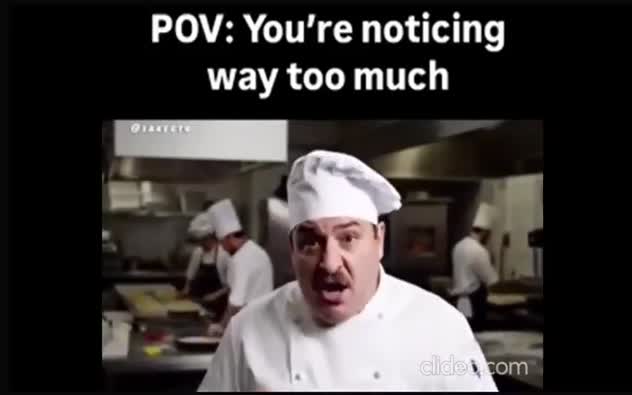









 Donate
Donate

